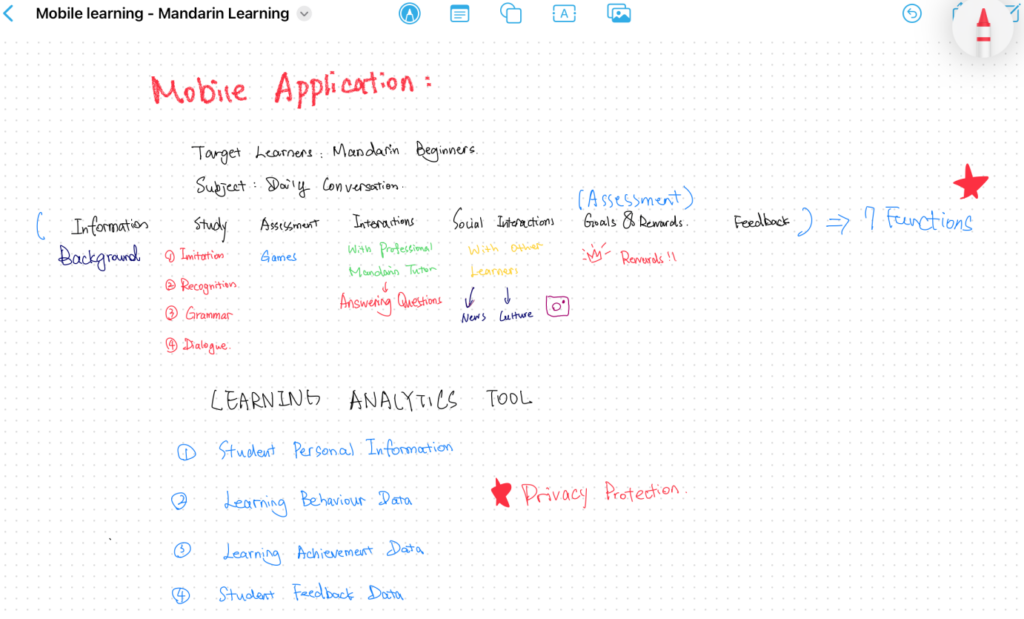
My topic this week is to explore the advantages of mobile learning in language learning and design an app for learning Chinese. Due to time constraints and needing more technical knowledge, this design is only in the draft stage.
Mobile learning has become increasingly popular in recent years as more and more individuals seek convenient ways to learn languages. Accessing language learning materials and practice exercises via mobile devices has enabled learners to improve their language proficiency.
Mobile learning can be particularly effective when it comes to teaching language due to the technology’s interactive nature. By integrating multimedia elements such as audio and video recordings, images, and interactive exercises, mobile language learning apps can create engaging and effective user learning experiences.
Based on this week’s exploration, my app design includes the following key features to ensure its effectiveness. Firstly, the app provides learners with a structured curriculum that includes basic vocabulary, grammar, and pronunciation lessons. Secondly, the app offers a variety of interactive exercises that allow users to practice their language skills in a fun and engaging way. These include listening exercises, speaking activities, and games that test the user’s knowledge of vocabulary and grammar.
In addition, the app allows users to track their progress and provide feedback on areas where they need to improve. This could be achieved through regular quizzes and assessments that evaluate the user’s proficiency in various language skills. The app also incorporates social features like chat rooms and language exchange programs to allow users to interact with other learners and practice their language skills in a more realistic context.

Click on the link below to download the original picture.
6 Mobile Learning Best Practices
- Subject matter.
- Easy to follow navigation.
- Interactions.
- Social interaction.
- Game mechanics.
- Goals and rewards.

Reflections:
As I designed the app, I thought about the question of whether mobile learning could replace the traditional classroom. Some people think that learning a language through a cell phone or tablet lacks interactivity and personalized instruction. In addition, some learners may feel a lack of professional guidance and feedback, which may lead to poor efficiency and effectiveness in their learning. Also, studying on a phone or tablet for long periods of time may lead to problems such as visual fatigue and poor concentration.
I considered these problems when I designed this app. I think the problem of lack of interactivity and personalized instruction can be solved by professional Chinese tutors answering questions online. About the problem of visual fatigue and lack of concentration, I would like to solve it with “restrictions”, for example, when using this app to study, no other app can be opened, and when studying for a certain time, the app will remind learners to rest their eyes.
But these solutions are ultimately on paper, and I’m not sure if they can technically be achieved or create some other problems.
Reference Resources: